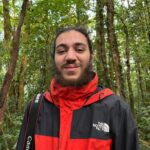Wondering what went right this week in the conservation world? We’ve got you covered with our Conservation Optimism Round-Up! We are collating stories of optimism from around the globe so that you never miss your dose of weekly motivation.
1. Leopards Are Living among People. And That Could Save the Species
” This is a story of two highly adaptable species sharing the same space—and a story of hope in these otherwise bleak times for wildlife. Here commonplace notions about large cats being fearsome and bloodthirsty break down. Instead we find wild carnivores and people trying to survive, having their young and living in their societies right next to each other.”
Peaceful coexistence with wildlife! 🐘🙌🏻
— InternetOfElephants (@ioelephants) March 17, 2023
Leopards Are Living among People. And That Could Save the Species https://t.co/mAAvuDoUFw
Brilliant and absolutely relevant article by @vidyathreya for @sciam. #conservationoptimism #natureforall #humanwildlifeconflict
2. Bigger Is Better: Panama Expands MPA to Protect More Than 54 Percent of Its Oceans
” The expansion of the Banco Volcán Marine Protected Area in 2023 has not only led Panama to protect more than 54% of its territorial waters, but will also buffer climate change, protect Panama’s deep-sea mountain environments, and help safeguard fauna from human interventions, including several fish and invertebrate species of high commercial value, such as the Caribbean spiny lobster (Panulirus argus). “
Thanks to the efforts of #CSOs, #conservation organizations, and the #Panama Government, a #MPA has been expanded, contributing to the country's protection of 54% of its territorial waters!#conservationoptimism #LetNatureThrive #ocean #marine https://t.co/GoCEwJ4GFG
— Global Conservation Solutions (@_GCS_) March 19, 2023
3. A new species of gecko has been discovered in India
” We describe a new species of rupicolous Cnemaspis from the Male Mahadeshwara Wildlife Sanctuary in the Eastern Ghats. The current description is based on a type series of eight specimens that bear a unique combination of morphological and colour pattern characteristics that do not occur in other closely related species.”
New gecko species! Cnemaspis 'ganeshaiah-i' 👏 #conservationoptimism #biodiversity
— TORquED .eth .lens (@DigiMaverick) March 15, 2023
How cool it would be if citizen-scientist ID's a new species via a #cameratrap #CitSci project and gets to name the sub-species.
🤔Possible use case for #blockchain in conservation science? https://t.co/JCl8UOn9zo
4. Province extends old-growth logging deferral in endangered spotted owl habitat
” More than 280,000 hectares of spotted owl habitat have been protected as part of an integrated strategy that safeguards 100,000 hectares of long-term owl habitat, in addition to the 180,000 hectares of protected habitat within provincial parks, Greater Vancouver watersheds, ecological reserves and regional parks.”
Thanks to the efforts of the #BC Government and #conservation organizations, approx 32,000 ha of #OldGrowth #forest have been deferred for logging, protecting #habitat for the Northern Spotted #Owl! 🦉#Canada #conservationoptimism #LetNatureThrive https://t.co/XCECTwzBlN pic.twitter.com/KqbVx4R798
— Global Conservation Solutions (@_GCS_) March 17, 2023
5. Demographic rates reveal the benefits of protected areas in a long-lived migratory bird
” Here, we take advantage of a 30-y dataset on Whooper swans which provides a rare opportunity to quantify the role of nature reserves in the population dynamics of a migratory waterbird. We find that nature reserves play a key role by boosting the survival of this species and will effectively double its population size by 2030.”
How about a dose of Friday #ConservationOptimism? Nature Reserves @WWTMartinMere @WWTCaerlaverock @WWTWelney have helped to double the number of whooper swans wintering in the British Isles in 30 years! +🦢🦢🦢🦢🦢🦢+ see: https://t.co/GzN4P9YuJO pic.twitter.com/vkPmrorbfd
— Richard Sherley (@rbsherley) March 17, 2023
6. Wisdom, the world’s oldest known bird in the wild, is a grandmother again
” Biologists first identified and banded Wisdom in 1956 after she laid an egg. Mōlī, aren’t known to breed before age 5, making Wisdom at least 71 years old. It is estimated that Wisdom has produced 50-60 eggs and as many as 30 chicks that fledged, according to Jonathan Plissner, supervisory wildlife biologist at Midway Atoll National Wildlife Refuge. “
I am a complete sucker for Wisdom. My news to me good news for Mar 17 #OceanOptimism #EarthOptimism https://t.co/eLvzvI8HXp
— Dr. Nancy Knowlton (@SeaCitizens) March 18, 2023
7. Indigenous funding model is a win-win for ecosystems and local economies in Canada
” First Nations in the Great Bear Rainforest and Haida Gwaii of Canada, have successfully invested in conservation initiatives that have benefited ecosystems while also increasing communities’ well-being over the past 15 years, a recent report shows. ”
A win-win for indigenous people and the planet. My news to me good news for Mar 18 #EarthOptimism https://t.co/8sL6zCBXmi
— Dr. Nancy Knowlton (@SeaCitizens) March 19, 2023
Have a story to share for our weekly round-up? Use #ConservationOptimism on Twitter, Facebook, LinkedIn and Instagram!


